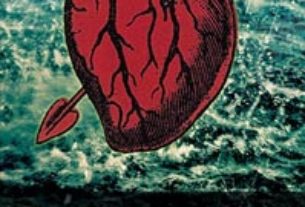At Home in Talpa de Allende, Jalisco
Mexico enjoys temperate climes throughout the year. It gets a bit warm on the coast in the summertime and a bit chilly in some of our mountains in the wintertime. But generally, we don’t suffer the debilitating hot, humid summers our northern neighbors do, nor do we skate around on frozen lakes in the wintertime.
I would venture to say that you can’t even buy a snow shovel in Mexico, and you will never see salt being strewn on the highways or for that matter, we don’t really know what a snowmobile is down here.
Years ago I lived in Memphis, Tennessee, and I remember a roommate from Guatemala, who had never seen snow. When we had our first snow of the season, she ran into the street and tried to catch the flakes in her hand. Those of us who have lived in cold countries know that’s not possible, but try to imagine the wonder of your first snow. I doubt many of us can remember how it was.
The boy I’m telling you about today was born in Guadalajara in 1890. His family moved to Talpa when he was five years old. From all accounts, he loved this town and the big house his father built. He writes about going to the shoemaker when he and his brothers needed new shoes. They stood on a piece of cardboard and the shoemaker drew around their feet with a piece of charcoal to determine the shoe size. Their clothes and hats were made by the local tailor, the blacksmith made their knives with bone handles and the carpenter made their toys.
He tells of his school days and how the boys went to one school and the girls went to another. They all studied “reading, ‘riting and ‘rithmatic,” but the girls learned “sewing and kitchen” at an early age.
Although their house was in the center of town, they had about two acres for a back garden. He recalls they had bananas, papayas, pineapples, oranges and limes growing. They also grew their own coffee.
When he was seven years old, the unexpected death of his father changed his life drastically. His mother sold the big house in Talpa and moved the family to Guadalajara where they lived in “cramped quarters with a relative.”
An uncle living in Iowa offered to take the boy and see to it he was educated. He remembers boarding a train in Guadalajara and, through tear-blurred eyes, waving goodbye to his mother, two brothers and a sister when he was thirteen years old.
It was wintertime when he arrived in Keystone, Iowa, and one of the first things his uncle bought him was some “wool long-johns.” He was amazed that he could fill a can with water, set it outside at night and it would be frozen solid the next morning.
When he was sixteen years of age, he was invited to visit a cousin living on a farm near Weyburn, Saskatchewan. He lived several years “batching it with Bill.” He relates how he had the opportunity to homestead 230 acres, but big mosquitoes and long, cold winters eventually sent him back to Iowa. Read, in his own words, how Mr. Herman A. W. Koch spent a cold day in Canada.
“New Year’s Day, 1910, I had an experience I’ll never forget. I was returning from Weyburn, where I had gone to have some feed ground. About a mile from home, a neighbor came out and suggested that I put my team in his barn and spend the night. It was snowing real hard and the snow had commenced to blow by this time. It was the beginning of a blizzard and it was getting dark. I thanked him and told him since I only had a mile to go, I would make it alright and I’d better get on home. This was 6 o’clock and I had one mile, due east, to get home.
“There was not a ditch, fence or tree to guide me. I should have let the horses lead perhaps, or left the triple box of feed to set, and rode one of the horses home. I didn’t do either and got off the road. By this time, the wind was really howling from the northwest and snowing so hard I could not even see the horses. By the time I had gone far enough I was sure I was lost, I did unhitch from the sled and got on Dan, a little bronco that was pretty smart. I had a warm sheepskin coat with a large collar and two horse blankets that I wrapped around my legs. Convinced that I would find some shelter, I started out again.
“Luckily, it was not too cold. After riding around about two hours, I came back to my sled. This proved one thing to me; I had been going in a circle. I untied the horse from Dan’s hame, rearranged my blankets; one around each leg, and let Dan have his head. I did not try to guide him, and started out again. This time I was hopeful the horses would find a farm house or, at least, a straw stack where I could spend all night. I just let the horse go wherever he wanted. Finally, in another couple of hours the horse quickened his pace, and in order to test him, I tried to turn him around. This, Dan objected to by bucking. I stroked his neck and petted him, letting him go again. In fifteen minutes we were home. It was 10:30, so you see I was four and a half hours making one mile.
“The next morning the temperature was 55ºF below zero. Several people, who were lost farther from town where the houses were really far and few between, froze to death. I had plenty of clothes on, and undoubtedly, the warmth of the horses helped to keep me warm.
“It was three days before the storm cleared enough we could see the sled. It was three miles south of our house. There were about four sections of land in that direction and no buildings. On another occasion, Bill sent a hired man to town with a cow. The man did not get home before dark and he got lost. He had to spend the night in a straw pile. This happened in the summertime, and it was easy to loose your way since there was nothing but a wagon trail through the prairie, and the houses were pretty far apart.”
We wish you a Merry Christmas and a Happy New Year from sunny Mexico.


